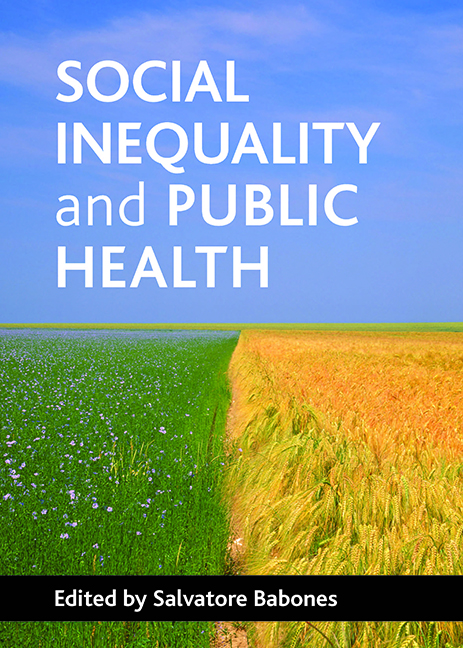Book contents
- Frontmatter
- Contents
- List of figures, tables, maps and boxes
- Preface
- Notes on contributors
- one Introduction
- Pathway 1 Differences in individual health behaviours
- Pathway 2 Group advantage and disadvantage
- Pathway 3 Psychosocial factors in individual health
- Pathway 4 Healthy and unhealthy societies
- Conclusions Public understanding of the new public health
- Index
three - Examination of the built environment and prevalence of obesity: neighbourhood characteristics, food purchasing venues, green space and distribution of Body Mass Index
Published online by Cambridge University Press: 22 January 2022
- Frontmatter
- Contents
- List of figures, tables, maps and boxes
- Preface
- Notes on contributors
- one Introduction
- Pathway 1 Differences in individual health behaviours
- Pathway 2 Group advantage and disadvantage
- Pathway 3 Psychosocial factors in individual health
- Pathway 4 Healthy and unhealthy societies
- Conclusions Public understanding of the new public health
- Index
Summary
Introduction and background
Obesity has become an epidemic in the US and it is poised to become the nation's leading health problem. Sixty-five per cent of the US population is either overweight or obese. However, the condition is not evenly distributed along racial, socioeconomic or gender lines. The prevalence of adult overweight and obesity is higher among Hispanics and African Americans than among non- Hispanic white people (Flegal et al, 2002). African Americans have the highest obesity rates and have also experienced the steepest increases in Body Mass Index (BMI) over time (McTigue et al, 2002; Schoenborn et al, 2002; Denney, et al, 2004). Among Hispanics, African Americans and white people, women are more likely to be overweight and obese than men (Flegal et al, 2002; Hedley et al, 2004). Rates of overweight are higher for adults of low socioeconomic status (SES) (Drewnowski and Specter, 2004). There is strong evidence that women living below the poverty level are much more likely to be overweight or obese than women with higher incomes (Sobal and Stunkard, 1989; Stunkard, 1996; Chang and Lauderdale, 2005). Although the evidence for men is not so clear cut, there is evidence of a weak inverse relationship between income and obesity for white non-Hispanic men (Chang and Lauderdale, 2005).
Rapidly changing diets and reduced physical activity levels have led to a marked increase in the prevalence of diet-related chronic diseases in both developed and developing countries (Popkin, 1998, 2003). What circumstances have led to this trend? And why and how have disparities in obesity prevalence become so profound? This chapter seeks to address these questions by focusing on the relationship between obesity and its social context. We focus on the built and social residential environment of individuals, with the implicit understanding that there are myriad factors on biological and social levels that contribute towards obesity and its related consequences (for example, diabetes and cardiovascular disease). However, this chapter highlights how the residential environment of individuals can frame their health-related behaviours related to obesity, specifically diet and physical activity. We use the example of Pittsburgh, Pennsylvania, to examine the distribution of obesity within the city in relation to (1) the green space environment, (2) the distribution of food purchasing venues and (3) the sociodemographic characteristics of neighbourhoods within the city.
- Type
- Chapter
- Information
- Social Inequality and Public Health , pp. 25 - 44Publisher: Bristol University PressPrint publication year: 2009



